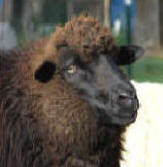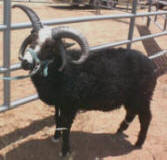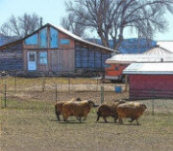 Whole
New Concepts
Whole
New Concepts
Training and Development Services for Today's World
See the Big Picture ~~ Respond to Change
Become Sustainable
Holistic Management
Family Farms & Ranches
Sustainable Agriculture
Business Development
Local Food
Beginning Farmers
When the Thistle Wilts at Fat Sheep Farm
by Cindy Dvergsten, Holistic Management Certified Educator
In mid-August 2002, I gazed down the Mancos River thinking to myself “Gosh it must have been a really wet year in 1776. This was the year Spanish explorers Dominguez and Escalante traveled through Southwestern Colorado in search of a trail from Santa Fe to Monterey California.
Their journals speak of a drowning and injuries during river crossings, and hence came names like Mancos, meaning one hand crippled; and Dolores, the river of sorrows. As I starred at the trickle of water picking its way haphazardly through cobbles, I tried to visualize how this river could pose danger to even the most tenderfoot traveler. Yes, my thoughts continued, this will be one of those years that future old timers refer to by casually noting “Yep, but it hasn’t ever been as dry as it was back in ’02, when even the thistle wilted”.
The Mancos Valley that Dominguez and Escalante crossed is said to have been covered with a “sea of bluestem.” This would have been in reference to the bluish colored western wheatgrass that thrives in the valley. Years later, the lure of ample water and forage drew American homesteaders to the valley. Cattle and sheep ranching flourished as producers worked to supply a local market created by the booming mining and logging industries of the late 1800’s.
After one hundred years of mismatched combinations of too much grazing and too much rest, low value sagebrush came to dominate the Mancos Valley. In need of more winter feed for cow-calf operations, the community built Jackson Gulch Dam to store water from the Mancos River to provide for season long irrigation. As irrigation ditches were established by the Mancos Soil Conservation District, the valley gradually turned emerald green on color.
Today lush pastures and hay lands dominate the valley with stunning backdrop of the La Plata Mountains. For for many reasons, ranching is declining in the Mancos Valley. The valuable irrigated land is subdivided into small pieces being bought up by folks who have decided to fulfill their dreams about going back to the land and an agrarian lifestyle.
Kathie and Lisha, two such dreamers, purchased ten acres which included the homestead of an old ranch. Moving from the Arizona desert, they were attracted by the snow capped mountains, a bright blue sky, Mesa Verde and the promise of plentiful water. Their aim was to bring the farm back to life, and through the process, enhance their lives. Thus, they established “Fat Sheep Farm”
Holistic Management Helps New Landowners
With a smile, Lisha recounts the feelings of elation mixed with confusion as they exclaimed to themselves one day: “Now that we have the farm, what do we do with it?" Their inquiry led them to the 1998 Sheep Is Life event in Farmington New Mexico, a celebration of traditional Navajo culture. They attended the Holistic Management workshop presented by myself and also discovered the Navajo-Churro Sheep which were the primary focus of the event. A holistic approach made sense to them as did the conservation of rare and endangered domestic farm animals.
Falling in love with Navajo-Churro Sheep, they purchased their seed stock that summer. The following spring, they participated in the Holistic Management® Framework core learning program offered by Whole New Concepts LLC.“Holistic Management has helped us to see the big picture of where we were going and gave us guidelines for figuring out what needed to happen and when,” notes Lisha.“We put the concepts into use right away and are learning more about the particulars as we go forward.”
Years of neglect had taken a toll on the old barns, home, and pasture. Restoration and renovation became the buzz words of the day. They soon realized that the simple life they had dreamed of involved a whole lot of work. Through the process of identifying available resources also known as “defining their whole under their management”, the women realized they were operating with limited resources. While many would have charged ahead to tear down the ramshackle barns and sheds, they chose to be conservative. “We decided not to tear anything down until we were sure we could not use it or restore it”, Kathie emphasized as she pointed to the barns they have stabilized.
Revitalizing the Farm with Heritage Livestock Breeds
 Resting in the shade of one of the refurbished sheds are a two
horses, a dozen Navajo-Churro heep and a guard llama named Lucky. Sheep have been central to stories passed down through
generations of Navajo people. The modern day Navajo sheep are
believed to be descended from the Churra, an old Iberian breed
brought to the Navajo people by the Spanish Conquistadors in the
late 1500’s. Through natural selection and breeding, Navajo shepherds developed the
Spanish Churra into a land-race with distinct genetic characteristics and hardiness suited to the rugged Colorado Plateau.
Resting in the shade of one of the refurbished sheds are a two
horses, a dozen Navajo-Churro heep and a guard llama named Lucky. Sheep have been central to stories passed down through
generations of Navajo people. The modern day Navajo sheep are
believed to be descended from the Churra, an old Iberian breed
brought to the Navajo people by the Spanish Conquistadors in the
late 1500’s. Through natural selection and breeding, Navajo shepherds developed the
Spanish Churra into a land-race with distinct genetic characteristics and hardiness suited to the rugged Colorado Plateau.
Sheep became the mainstay of the Navajo. The fleece has an inner layer of medium to fine fibers with an outer fleece of coarse fibers up to 12 inches. This unique combination of fiber sizes, the low lanolin content and wonderful colors makes Navajo Churro wool an excellent choice for weaving rugs, felting, rope-making, and for outer garments.
Prior to confinement on the Federal reservation lands, Navajo herders enjoyed a large area of lush grazing lands stretching from North-Central Arizona to the Rio Grande River in southern Colorado. Many Navajo families maintained a home base where they raised vegetables and corn, while family shepherds moved their flock through a series of summer and winter camps. For example, Navajo trailed their sheep from arid lowlands through the Mancos Valley to graze on summer range in the La Plata Mountains.
 The first blow to the Navajo-Churro Sheep came in the late 1850's when
thousands the sheep were rounded up by the US Government and shipped west to supply the California Gold Rush. In 1863, the U.S. Army decimated the Navajo
flocks in retribution for continued Navajo depredations. Also many sheep were left behind by Navajo people forced on to the "Long Walk" to prison camp at Bosque Redondo.
Upon their release from interment in 1868, Navajo were given commercial breed such as Ramblet and Merino to return home with.
The first blow to the Navajo-Churro Sheep came in the late 1850's when
thousands the sheep were rounded up by the US Government and shipped west to supply the California Gold Rush. In 1863, the U.S. Army decimated the Navajo
flocks in retribution for continued Navajo depredations. Also many sheep were left behind by Navajo people forced on to the "Long Walk" to prison camp at Bosque Redondo.
Upon their release from interment in 1868, Navajo were given commercial breed such as Ramblet and Merino to return home with.
The disruption of traditional stewardship and grazing patterns led to season-long grazing of reservation lands some areas, while other areas received no grazing. Weather and geologic gully events in the late 1800’s contributed to a decline in the rangeland health, and disrupted traditional irrigation systems. Navajo people began to struggle with a growing population, reduced summer grazing areas and less irrigated land. In addition the so called "better" commercial sheep breeds did not do as well as the Navajo-Churro Sheep and took more to land feed. To confound the situation, wild game populations were depleted leading to further decline in ecosystem health.
Most Navajo sheep production was small scale. Families participated in a subsistence lifestyle and economy which flourished at times. The added value of Navajo Rugs brought cash to families for products they could not produce their selves. This cash flow increased in importance as Navajo became dependent on outside supplies of food and necessities.
In the 1900s further stock reductions were imposed by the US Bureau of Indian Affairs who’s agents shot most of the remaining sheep in 1932 for the sake of improving the rangeland and removing the “ugly” Navajo-Churro sheep. Navajo families watched in horror as their “life” was destroyed and then dumped into gullies to rot. Words cannot describe the value sheep had in the Navajo economy. Ripple effects shot through their society rendering them ever more dependent on the US Government.
By the early 1970’s an estimated 200 survivors of the original Navajo-Churro Sheep stock, mostly in isolated villages and remote canyons of the Navajo Indian Nation. Dr. Lyle McNeil, sheep husbandry specialist with the Utah State University, fell in love with the Navajo-Churro Sheep and has dedicated his life to the recovery of breed genetics and its return to the Navajo people. He founded the Navajo-Churro Sheep project which, along with support of other organizations and dedicated breeders, brought the sheep back from the brink of extinction.
Today a registry is maintained by the Navajo-Churro Sheep Association. Diné be iiná, a grassroots, nonprofit organization founded in 1991, works to restore the balance between Navajo culture, life, and land. The American Livestock Breed Conservancy assists in promoting conservation of the breed. Small wool and meat growers like Kathie and Lisha are critical to the survival of the Navajo-Churro and genetic diversity in the breed.
Facing Disastrous Drought Conditions in 2002
No one could have imagined the kind of drought we are facing this year in Southwestern Colorado.“The drought!” as locals say, with a tone of stubborn defiance mixed with a sense of hopelessness, is the worst the Mancos Valley has seen in the 107 years that records have been kept. As of late August, most of the area had received only one tenth of the years “average” precipitation. Drastic shifts in the ecosystem are occurring as large population’s trees including 50% or more of the Pinion pine. Archeologists at the Anasazi Heritage Center speculate that this drought maybe similar in severity to the drought of 1296 AD, recorded in trees rings, which is believed to have forced 30,000 or more Anasazi Indians to leave the area.
Drought has affected many facets of the community and farm life. What trees to save, if any, is a tough question being asked by many, including Kathie and Lisa. Tourism is down in the town due to massive fires in nearby Durango and Mesa Verde National park. This is putting a big dent in the cash flow for many businesses including Kathie’s main street antique store. If things do not improve she will close the store rather than go back into debt to keep it open, and in that case she plans to put her knowledge work as an antique assessor.
Early Warning Monitoring Helps
The practice of Holistic Management embodies the concept of awareness. Holistic managers identify criteria that provide the earliest warning indicating things are not moving in the desired direction. This allows managers to be pro-active and thus minimize or eliminate negative outcomes.
Embracing the concept of early warning monitoring, Lisha noticed that water levels were dropping in their well long before the full brunt of the drought hit. The well is fed both by snow melt and deep seepage of irrigation water. Rather than wait to see what would happen, they decided to take immediate action to reduce water consumption to the minimum.
Faced with the possibility of no household water, they first reviewed past decision making. At the time of purchasing the farm they choose not buy a rural water tap because it did not address their weak link at the time. There are no new rural taps available in the Mancos Valley due to lack of capacity for water treatment and delivery. So the only taps available are held privately and sell for about $10,000. This option did not pass the Energy/Money Source Use testing guideline as it would have caused more debt.
Always having a reliable source of water from their well, the women had never investigated the old cistern buried beside the house. “To tell you the truth, we really were afraid to look in there for fear of what we might find, smiled Kathie.”So they researched the expense of installing an above ground cistern and having water delivered. Utilizing the Holistic Management Testing Guidelines, they discovered logistical problems and recurring costs that made this option also fail to meet the social, economic and environmental soundness the desired.
Finally they returned to the possibility of repairing the old cistern. They bought a 16 foot ladder at a garage sale and found a person who understood cisterns to help them. Much to their relief they found only a few salamanders, some water and muck at the bottom. With a few minor repairs and some new piping they were ready for water to be delivered. The cistern is large enough to take a whole truck load of water which is cheaper and more energy efficient. Now, with the turn of single valve, they can easily switch from the well to water stored in the cistern as needed.
Less Water Brings Higher Yield
During the Holistic Management refresher session in 2002, I demonstrated to Lisha how to monitor for effectiveness of irrigation. Using a soil probe to check for depth of irrigation, she realized that she was achieving a very uneven 2-12 inches depth of wetness. Looking back at her decision making, Lisha realized that she had been spacing her side roll sprinkler sets, without further thought, the way she saw her neighbor do his irrigation.
Lisha improved the effectiveness of irrigation by overlapping her sprinkler sets to get a more even depth of watering. In a year where they received only 18% of their irrigation water, she was able to increase her first cutting of hay by 30% over last year’s tonnage.“I cannot tell you what an eye opener this has been for us,” Lisha exclaimed. Since they only had water for one cutting, this surprise increase in yield will help them to keep all of their stock.
Discovering a Sense of Belonging
A great sense of community is another benefit the women enjoy. “We have learned to ask for help and to work together with others” says Kathie noting that water use is very complicated in the Valley. “With the subdivision of land, an old earthen ditch system and two sources of irrigation water, we had to get our heads together on this ditch to figure how to make a little water work for everyone.”
“Still, this drought is just real depressing.” Lisha noted as she described how the barn swallows let their babies die because of a lack of insects to feed them with. “But at least we are not alone with this sense of desperation.” The women had just returned from a Colorado Branch for Holistic Management tour where they found condolence as they heard other more experienced holistic managers express similar feelings at the 3R Ranch.
During the tour they heard experienced holistic managers around the state share about how they have become debt free and profitable, are plan at the worst to minimize their losses when hard times happen. “We were impressed by how the 3R recognized the severity of the drought coming one year in advance and how ranch owners chose to take a cut in income, rather than sell the herd off like neighbors were doing,” said Lisha. The ranch manager split the 3R herd by shipping mother cows to Oklahoma and holding heifers back. This way the ranch would have their genetics in place and reasonably healthy land to start with when the drought passed. Kathie and Lisha returned from the tour knowing that as depressing as times are, at least the losses can be cut, and that practicing holistic decision making will help them make it through.
Learning to farm and becoming involved in the larger picture of a whole landscape, community and region has deeply enhanced their lives. While we enjoyed lunch at the kitchen table, Kathie remarked, “Yeah, for one thing, we have learned to expect the unexpected. We put 500 gallons of mucky water from the bottom of the cistern on our willow tree.We know that it is not native, but gee, it is valuable to our investment in this place.” They hope that the water will be enough to hold the tree until it rains.
Endnote:
In 2010 Fat Sheep Farm is full of life. Kathe and Lisha are well known in the area as breeders and wool producers. Their Navajo Churro wool fleeces have won numerous awards at fiber shows. They continue to improve their grazing management, hayfields, farm business and way of life using holistic decision making. Thanks to the generosity and enthusiasm of Lisha and Kathe, there are several successful breeders in the area who cooperate to improve the status of Navajo-Churro Sheep and the Navajo people developed this wonderful breed. Kathe and Lisha actively participate in Sheep Is Life, and the Navajo-Churro Sheep Association.
Copyright©2010 by Cindy Dvergsten, Whole New Concepts LLC. Permission must be granted in writing for use of this article by contacting Whole New Concepts LLC.
Topics Covered in This Article Include:
Holistic Management in
Small Farm and New
Farmer Situations
Holistic Management and Heritage Breed Conservation
Holistic Management in
Times of Drought
Navajo-Churro Sheep

Article Links
Irrigation Water: Handle with Care.
When The Thistle Wilts at Fat Sheep Farm
Nature's Lawn Mowers
Other Links
Our Distance Learning & Mentoring Program
Consulting & Facilitation Services
Contact Us For More Information